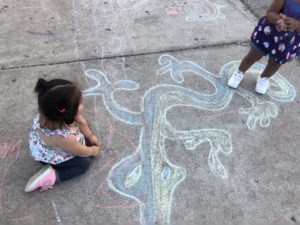Child Physical Abuse Dynamics
Posted by Patricia on Jun 19th 2018

Mental Health Providers and Child Physical Abuse Dynamics
Physical discipline of children is common—approximately 70-80% of parents report using spanking. However, sometimes physical discipline causes injury to the child. Although states vary in their definitions, about 20% of children experience physical abuse (defined as when a caregiver causes an injury to a child). Physical abuse can include instances when the caregiver did not intend to physically injure the child—sometimes it is a spanking that “crosses the line.” More infrequently, though it does happen, the injury was intentionally inflicted on the child. As experts in responding to child victims of abuse, Child Advocacy Centers, hereinafter referred to as, CACs, are in a unique position to help these children have a coordinated response, and access to evidence-based interventions when needed. However, when CACs and their connected mental health professionals do choose to serve these children and families, there are important dynamics of physical abuse that make serving these families distinct from other forms of abuse.
Dynamic of Physical Abuse
One unique dynamic of physical abuse is that, frequently, the child remains living with the physically abusive caregiver. Even when the child is placed initially with a relative or in foster care, they are much more likely to return to live with the physically abusive caregiver than after sexual abuse, for example.
Legal issues are another complicating dynamic sometimes limiting caregiver participation in treatment.
Caregivers Behavior
When a child is injured as a result of the caregiver’s behavior, a criminal investigation may ensue. Sometimes this happens even while the family is living together. In these instances, the caregiver may obtain a lawyer who may advise against open participation in treatment. Although this barrier can be addressed and caregivers can successfully participate in treatment, it is important for CAC professionals to be mindful of this possibility.
Forms of Abuse to a Child
While some forms of abuse are routinely founded by authorities without physical evidence (i.e., sexual abuse), legal findings of physical abuse are more often related to an injury to the child. However, physical discipline does not have to result in an injury or a legal finding/substantiation of physical abuse for a CAC intervention to be helpful. Some behaviors, such as threats with lethal weapons or throwing objects at a child that miss the child, may not result in an injury despite being clearly highrisk.
Reduce Future Risks of Child Abuse
While jurisdictions may differ on whether the definition of physical child abuse includes these acts, the CAC is in an excellent position to help reduce the risk of future physical abuse of the child. Professionals who conduct screenings at the CAC should use assessment measures to screen for high risk behaviors. And whether physical discipline causes an injury or not, when high-risk parenting behaviors are present, evidence-based interventions exist that can be extremely helpful in preventing physical abuse from happening.
Doing what you can to prevent child abuse will make you a better person!
Thank you!
Hope for Children Foundation

